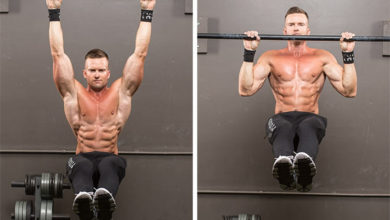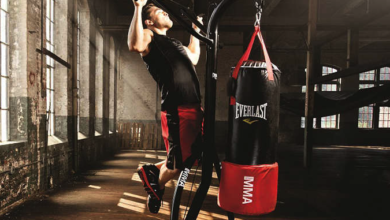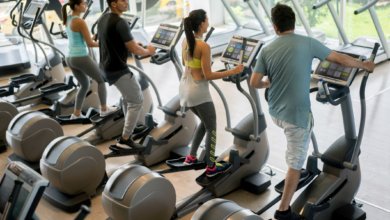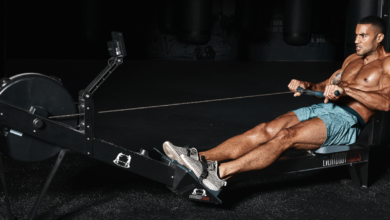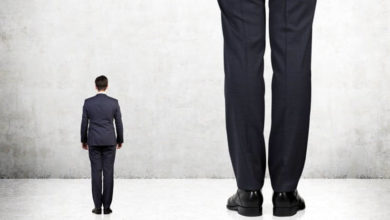Should You Squat and Deadlift on the Same Day?
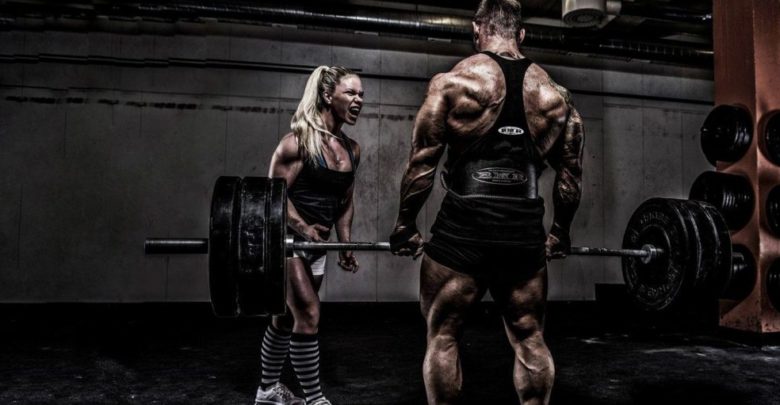
The deadlift is the king of all exercises. The squat comes a close second.
Both of these are compound lifts that require you to engage almost every major muscle group in your upper and lower body.
These are hormone churners too. They will help you get stronger and build bigger muscles while burning fat at the same time.
However, you will often find powerlifters doing only one of these workouts at a time. If they are squatting, they won’t do the deadlift until a day or two has passed and vice-a-versa.
This has led to a widespread belief that you should not be doing squats and deadlifts on the same day, as it leads to Central Nervous System fatigue.
If powerlifters, who we consider to be some of the strongest athletes in the world, do not squat and deadlift on the same day, where does that place the average fitness buff?
Should they even be attempting to do both these exercises on the same day?
Let’s find out.
Is It Okay to Squat and Deadlift on the Same Day?
The Overlap Conundrum
The squat, whether you are doing, back squat, reverse hack squats, or some other alternative, is predominantly used for targeting the quadriceps. Secondary targetted muscles involve your glutes and hamstrings.
If you have sketchy form, then you might also involuntarily use your lower back muscles and your obliques to an extent to finish the move.
Make sure you have a good form when squatting, getting a good affordable squat rack will help you with that.
The Deadlift on the other hand is considered to be more of a back and hip exercise with some variations, like the Romanian deadlift and the sumo deadlift focusing more on different muscles of the legs.
What this tells us is that there will be some overlap if you do both these exercises on the same day.
The question is, is the overlap severe enough to warrant not doing both these moves on the same day?
If you follow a push-pull workout routine or any full-body workout routine, you are already training different muscle groups with some overlap.
Take a conventional push day for example, where you load weight up on the bench press bar and crank away. You are working your arms and chest on the same day.
Same thing for the overhead press, both of which overlap and train similar muscle groups.
Or a pull day where you do pull-ups and upright rows, which again work overlapping muscles.
When it comes to deadlifts and squats, you can easily separate the muscle groups you train if you have good form, balance and stability.
You can for example, do strict barbell squats for your quads and do Romanian deadlifts with slightly lighter weight on the bar for your hamstrings.
Many leg routines proposed by seasoned bodybuilders include both of these exercises on their leg day some of them even deadlift and squat every workout.
The next most important thing to understand is fatigue.
Understanding CNS Fatigue due to Squats and Deadlifts
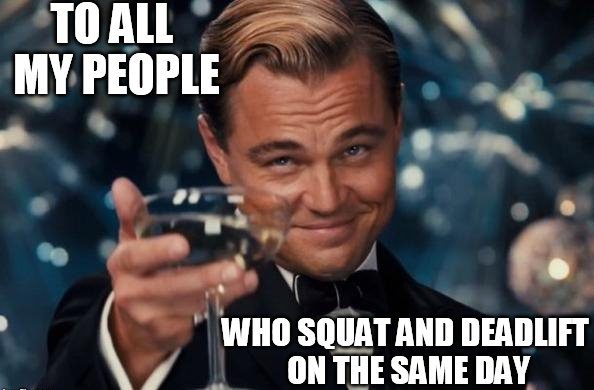
Since you will be attempting to move near-maximal loads with both these moves, fatigue will be unavoidable.
And fatigue is not merely muscular. It’s neurological as well. Ever tried going on a run after a heavy leg day?
Yeah, it’s extremely challenging because your legs are like jello. It’s hard to keep them straight.
This is CNS Fatigue at work.
CNS fatigue is a term used to describe a phenomenon in which you may experience certain flu-like symptoms that limit your quality of movement and involvement of muscle fibers.
Think of it like being unable to complete a movement with good form.
If you are doing a clean and jerk for example, a person with CNS fatigue would be unable to get those stabilizer muscles to fire, which would lead to compromised movement, subsequently posing the risk of injury.
I like to call it the wiggles.
CNS fatigue has been widely debated. So we have nothing novel to add to this.
But as many athletes are now starting to discover, it may be an overused, grossly exaggerated term.
Think of it like the placebo effect where a simple sugar pill often produces the same results as a medication because we believe that it will work.
Related: Protein Pills – My Top Pick
The same way, the fear of CNS fatigue is so deep rooted in our psyche that even the slightest tiredness is enough for athletes to believe that their CNS is trashed and they are overtraining.
Although CNS is very real (I am literally sitting here with CNS fatigue at the moment, just got back from the gym and I am shaky as heck typing this but the thing is) most athletes do not lift nearly enough to end up over trained.
That’s not to say that you can never over train. You can. It is very much possible.
But doing squats and deadlifts on the same day is rarely enough to push your body behind the threshold of normal training.
Some rest, nutrition and recuperation is all that you may need to bounce back on your feet.
With timed progressive overload and adequate rest, your neural inhibition reduces which in turn increases your strength.
So is it Smart? Or even Safe to Deadlift and Squat on the Same Day?

That depends on your overall workout goals, your experience and your current fitness levels.
But it’s definitely smart to do both on the same day especially if you are looking to train your muscles adequately and you are after some serious muscle growth, squats especially can tone your thighs, and deadlifts will tone your upper body.
Safe? There’s nothing unsafe about either of these lifts PROVIDED that you have good form.
If your form is poor, then both these lifts pose a severe risk of injury, and you should not attempt either of them, you can use a smith machine to do smith machines squats or smith machine deadlifts if safety is your concern.
Doing both of them on the same day does not exacerbate the risk of injury though.
Related Reading; Zercher Deadlift; What Is It, How To Do It, Muscles Worked, Benefits & Drawbacks
If I decide to do it same day, Should I Squat or Deadlift first?

Since the deadlift relies heavily on the hips and the back, and it is associated with one of the largest portion of a major muscle group (back) that takes a long time to recover, it is always better to squat before you deadlift.
If you do the deadlift first, you risk hitting squats with CNS fatigue (the wiggles) and an extremely sore back, which increases the possibility of you rounding the back during the movement. Also, haven’t you noticed that just about everything seems more difficult after a deadlift?
Try something as simple as bent over dumbbell rows after deadlifts to know what we mean.
If you squat with good form, you will only have tired legs, which are nothing more than an accessory muscle in a conventional deadlift.
If you do not want to follow this rule of thumb, you can decide on which lift you should do first, depending on your bodybuilding goals.
Prioritize the lift that is in sync with your goals.
For overall strength – Separate the Squat and Deadlift Days
Assuming that you are already squatting twice a week, once for strength and once for hypertrophy, and you are deadlifting once a week mainly for strength, you can separate the strength exercises by doing them on different days.
Instead, you can do your squat for strength and follow it up with a hypertrophy-based deadlift, like Romanian or sumo.
Similarly, if you are doing a hypertrophy based squat exercise, club it with a strength-based deadlift routine. Always squat before the deadlift.
Avoid doing two strength development exercises on the same day since they MIGHT overstress your central nervous system.
Even if you think you can do both exercises without getting tired and feel that you can hit them both adequately for growth, you still will not be able to hit them as hard as you would if you were to walk into the gym and hit them each on separate days as their own workout.
Does not matter if you have the best pre-workout, or the toughest training routine, you will get more growth from separating your squats and deadlifts.
For squat strength – Squat First
If our focus is on developing squat strength, then we wouldn’t even bother doing deadlifts on the same day due to the risk of compounding the fatigue. Just separate them by 72-hours to allow the body to recuperate fully before you lift maximal load again.
For deadlift strength – Deadlift First
If you are focusing on pulling the maximum weight and are planning to do both deadlifts and squats on the same day then hit the deadlifts, before you hit squats. As simple as that. Expend the most of your energy on the exercise you want to become strong at.
I Don’t Squat & Deadlift Same Day, Do I Need Rest Days in Between?

There are no universal rules when it comes to timing compound lifts.
Moreover, it depends on how fatigued you are and how hard you hit those muscles.
Some people are born with a naturally high work capacity which may have to do with their cellular composition, mitochondrial density and hormonal levels.
When clubbed with the right frequency and intensity of training, nutrition and rest, this capacity increases further.
Whereas it may get severely reduced in someone who’s not receiving the right training, nutrition and rest.
Depending upon which category you fall into, you can separate these lifts by 48-72 hours.
48 if you are experienced with the lifts and your body recovers completely without any compromises in your lifts.
72 if you take slightly longer to recover.
If you are doing both on the same day, we recommend that you wait at least a week before you attempt the same split again – at least until you can improve your muscle stamina and endurance to increase your training frequency.
How many times a week should you deadlift and squat?

Just like everything else in the fitness world, this is a perpetually debated topic with no clear verdict.
Old school bodybuilder gym goers go by the 1x per week protocol where they take an entire week off before hitting a heavy, compound lift again. So if they do deadlifts on Monday, they wouldn’t do it again before next Monday.
However, this is largely believed to be inefficient by newer bodybuilders who believe that 2x a week is the ideal frequency for doing compound lifts like squats and deadlifts.
3-days is enough time for your body to recover provided that you are taking the right amount of rest between workouts, you are getting 6-8 hours of quality sleep and you are giving your body the nutrition it needs to refuel.
So, if you hit squats on Monday, you should be ready to hit it again on Thursday.
Even if you do squats and deadlifts with progressive overload, you should still be able to train 2x a week without too many problems.
Recommended Reading;
- Benching More Than You Squat?
- How Many Crunches Should I Do A Day?
- How I Built My Bubble Butt
- Best Sissy Squat Machines
- Best Short Barbells That I Would Personally Buy for My Home Gym
- Tactical Barbell Review, Results, Pdf Download
Sources;
Ben Mayz
Hi there! I'm Ben, main author and chief editor at Fitlifefanatics.com. I have been obsessed with Strength Training and Fitness for 18 years now.
My passion for living a happy fit lifestyle is what made me realize that fitness is what I wanted for my future.
I went on to earn my Masters in Sports Training & Biomechanics.
My passion for Strength training & fitness and my love of helping others is what made me start Fitlifefanatics.
Here, myself, and a team of specialist aim to provide the most accurate, and actionable information possible in hopes to help foster the fitness community forward.
You can learn more about Fitlifefanatics on our About Page
